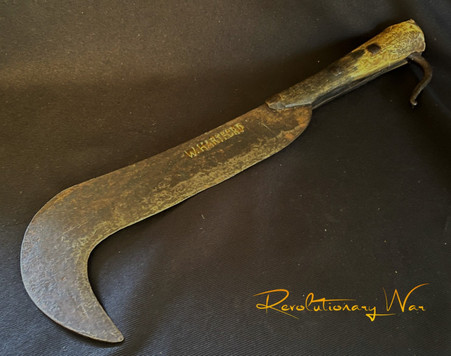 Loading... Please wait...
Loading... Please wait...-
Call us on (973) 810-2976
- My Account
- Gift Certificates
- Items / $0.00
All prices are in All prices are in USD
Categories
- Home
- Artillery related items
- RARE – Revolutionary War Excavated Fascine Knife, recovered at Hartford, CT, as in museum
- Home
- NEW ITEMS
- RARE – Revolutionary War Excavated Fascine Knife, recovered at Hartford, CT, as in museum
- Home
- Identified Artifacts
- RARE – Revolutionary War Excavated Fascine Knife, recovered at Hartford, CT, as in museum
- Home
- Excavated Artifacts
- RARE – Revolutionary War Excavated Fascine Knife, recovered at Hartford, CT, as in museum
- Home
- Personal Items
- RARE – Revolutionary War Excavated Fascine Knife, recovered at Hartford, CT, as in museum
- Home
- Late 18th Century / Early 19th Century
- RARE – Revolutionary War Excavated Fascine Knife, recovered at Hartford, CT, as in museum
- Home
- Revolutionary War items
- RARE – Revolutionary War Excavated Fascine Knife, recovered at Hartford, CT, as in museum
- Home
- REVOLUTIONARY WAR ARTILLERY
- RARE – Revolutionary War Excavated Fascine Knife, recovered at Hartford, CT, as in museum
RARE – Revolutionary War Excavated Fascine Knife, recovered at Hartford, CT, as in museum
Product Description
This is a rare piece being offered, it is an excavated hand-forged Fascine Knife. It measures 14 ½” overall, 6” bone handle, and the widest part of the blade is 2”. It was recovered many years ago at a Revolutionary War site in West Hartford, Connecticut.
The fascine knife was a common cutting tool of colonial soldiers (also known as brush hook or brush cutter). It was a side arm/tool issued to both American and British light infantry, engineers, and artillery (including German troops). It served both as a personal weapon and as a tool to cut fascines and clear brush when needed. Fascines are bundles of branches and sticks used to reinforce defensive embankments, trenches, and earth ramparts.
This West Hartford area is notable for a now preserved 1778 Revolutionary War campsite used by Continental Army soldiers under General Israel Putnam (see pictures). The site, located near Reservoir No. 6, served as a temporary home for about 800 soldiers before they moved on to Danbury, and the campsite later became a hospital.
The campsite provides a glimpse into the daily life and hardships faced by the Continental Army during the Revolution. The campsite still has stone-lined fireplaces and remnants of huts still visible, offering tangible evidence of the encampment. The site also provides insight into the strategic decisions and movements of the Continental Army under General Washington.
Connecticut played a crucial role in the Revolutionary War, providing soldiers, supplies, and privateers that captured British ships. The knife remains in every solid condition – the handle and blade still tight. There are fascine knives shown in “Collector’s Illustrated Encyclopedia of the American Revolution” by Neumann & Kravic (see pictures).
A very interesting part of the blade is it continues through the bone handle and ends with a hook. This made for a tight grip, preventing the hand from sliding off when swinging. There is also one of these knives in the Fort Plain, NY Museum (see pictures). This is an amazing piece of Revolutionary War history and from a state that offered few excavated artifacts.



